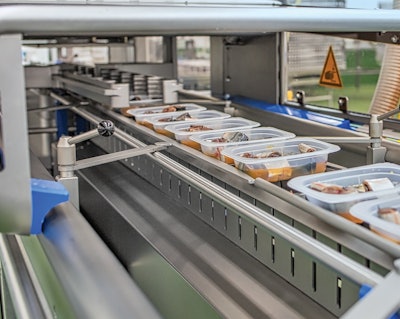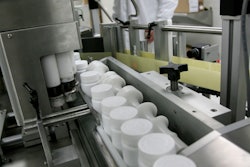The 2011 tsunami that shocked Japan and the rest of the world also took a toll on the business of Japanese seafood processor Abecho Schoten. Its plant in Ofunato, which had only started production the year before the storm, was severely damaged. But five years later, the facility is fully up and running again with ultra-modern processing and packaging equipment. Playing a key role was SEALPAC and its Japanese distributor Nakamura Sangyo Co. Ltd.
Nowadays, the factory provides work to 92 employees again and has a capacity of handling 150 tons of fresh and frozen seafood per day. Main species are pacific saury, yellowtail, and pacific mackerel, all caught off the coast from Ofunato.
“Crucial in maintaining the quality of these species is temperature control,” says Factory Manager Masahiro Ohata. “Immediately after raising the nets, the seafood is securely chilled or frozen. We even take into account the temperature variations of the sea water per season.”
At the heart of the new packaging lines is a SEALPAC thermoformer as well as a tray sealer. This is also the case in the firm’s other facility in the Miyagi prefecture, located in the town of Kesennuma. In Ofunato, the focus is on the packaging of small pieces of fresh seafood in a sweet sauce, which can be heated in the microwave by consumers. The Sealpac thermoformer is used primarily for larger packs that find their way into foodservice channels. The Sealpac system that seals premade trays, which is the focus here, is primarily for supermarket channels.
In order to address the needs of the Japanese market, Abecho uses a SEALPAC A6 tray sealer for packaging three different tray sizes: from single portions up to family packs. The line starts with a SEALPAC AS-LS1200 servo linear denester that smoothly positions the trays on the in-feed conveyor. To run different tray sizes, only the mask and suction unit of the AS-LS1200 denester have to be exchanged. After denesting, the trays are transported towards the A6 traysealer by means of a Walking Beam. With this system, the trays are picked up by a revolving bar instead of moving on a conveyor belt. In that way, it is possible to achieve a constant high speed, ranging from 25 to 30 trays/min, and still place each tray accurately in the right position.
Walking beam
As soon as the trays have been manually filled with pre-weighed pieces of seafood, they arrive at the filling station, where the sweet sauce is added fully automatically by a system supplied by Naomi. The Walking Beam system ensures that further transport of the trays can take place without sauce spilling over the edge. SEALPAC’s A6 traysealer makes sure that each tray is hermetically sealed, after which they go through a metal detector and check-weigher. Last but not least, all products are “pasteurized” inside their tray. Abecho chooses not to specify how this pasteurization process is executed, but it allows the firm to supply its products with a refrigerated shelf life of about one year.
As Mr. Yoshida explains: “We are extremely satisfied with the flexibility of the tray-sealing line that allows us to run the different trays. SEALPAC’s quick tooling exchange system ensures that we have minimum downtime. Furthermore, the equipment is easy to clean and hardly required any maintenance or spare parts until now. By the way, the same actually applies to our SEALPAC thermoformer in the adjacent room.“
Abecho sells its products in various supermarkets (e.g. Coop) and convenience stores in the region. Mr. Ohata: “What Japanese consumers demand is convenience. As an example, each tray has two peel tabs for easy opening. Furthermore, we offer them fresh seafood products with a long shelf life that can be heated quickly and easily in their microwave, as the food needs to be easy to prepare these days.”
Although its share is not high yet, Abecho also offers seasonal seafood products through the internet. This is one of the trends that will pick up in the future. Just like the increasing demand for recyclable packaging materials. As Mr. Yoshida concludes: “After the tsunami in 2011, we have been able to re-build our business with great prospects for the future. We will continue to address the demand for convenience, for example by expanding our processing abilities. And we trust in Nakamura Sangyo and SEALPAC for supporting us in these activities.”


























